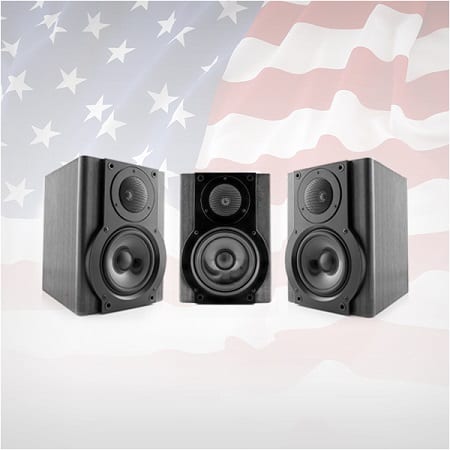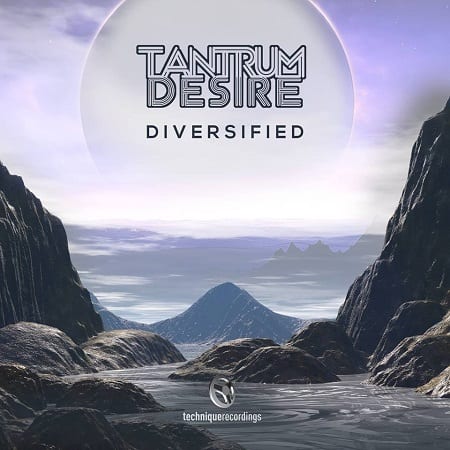Electronic music is one of the most diverse and genre blending types of music available to us. We take pride in appreciating a collection of different styles, and value producers who are talented enough to dip their toes in a variety of sounds.
Different genres originate in different areas of the world; stemming from classic styles, we take new era twists and create something innovative and exciting. One particular genre I wanted to explore was drum & bass.
From its genus in UK hardcore and rave culture in the early 90s, there is no doubting its global takeover bid. Most recently; North America. Home to so many styles of its own, in a way the US is one of D&B’s final territories. While drum & bass has enjoyed and explored the genre for years (see: the likes of Random Movement, DJ Craze, Evol Intent and Kill The Noise’s previous guise Ewun) there’s a definite increase in popularity with acts such Netsky and Andy C headlining major US festivals and American artists being signed by leading UK labels.
I spoke with a few members of the D&B community from both sides of the Atlantic to understand whether the US really is falling for drum & bass in a major way and, if it is, why now?
Contributors include:
Legion & Logam: Hotly-tipped Atlanta-based duo making big noises on the likes of Ram and Playaz
Sinistarr: With cuts on Metalheadz on Horizons going back to the mid zeroes, Sinistarr fuses the spirit of Detroit in his unique beat creations.
Noisestorm: Ireland-based multi-genre master who’s developed a loyal following and heavy US presence through his work with Monstercat.
Submorphics: San Francisco-based producer with deep roots in the scene for over 10 years with releases on Innerground, Liquid V, Spearhead and, most recently, SGN:LTD.
Kid Hops: Seattle-based producer, DJ and broadcaster, Kid Hops’ sounds can be found on the likes of Fokuz, Dispatch and C.I.A to name a few.
Nu:Tone: Needs no introduction. The Hospital artist has been touring the US since 1999
Metrik: Another Hospital mainstay who needs no introduction, Metrik has been performing in the US since 2013 and just returned from his first full US tour with Hospitality.
I could have spoken to hundreds more, but their reactions indicate a clear development of one of electronic music’s most distinctive genres and its newfound place in North American hearts…
“Whereas the media sees EDM as a rebellious movement against the mainstream, there are a growing number of people who see D&B as a rebellious movement against EDM. As a genre – and more importantly, as a scene – we have managed to largely escape all the cultural emptiness of mainstream EDM. It is a scene built on music, not gimmicks.” – Nu:Tone
“Drum & bass will always hold its ground as a niche genre that has a very dedicated fan base, but it doesn’t have mainstream appeal. I don’t think that is necessarily a bad thing- look what happened when dubstep blew up and got extremely oversaturated. There will always be big D&B songs that are well received by the US, but because they are good songs, not because of the genre. D&B will live on, whether people know what it is or not- its influence will find its way across all spectrums of music, as it has done since its inception!” – Noisestorm
“If drum & bass were to go mainstream here in the US, it would be with a UK label, not American. Look at RAM right now, you could kind of hear a musical change when Andy C got signed by Atlantic. On the other end you have Hospital who seem to be going back to their liquid sounds because they have enough of a following now, so they can just switch it up and go back to the way it was.” – Sinistarr
Slowly but surely American D&B labels are making their presence known with labels such as Soul Deep and Icarus Audio pushing exciting new native talent. But this still makes you wonder why it’s taken so long for the sound to make a more nationwide stamp. Could it be the sweeter aftertaste of the EDM explosion as new fans begin to dig deeper after their initial big room initiation? Legion & Logam and Nu:Tone think so…
“America can be a ‘hard sell’ when it comes to the underground styles of dance music. But that has been changing as kids are always looking for the “next big wave” of music. I’d have to say that we’ve been embraced a bit more by the UK scene, having tracks featured on Radio 1 and working with labels like Ram and Playaz would be a considerable advantage over the American scene.” – Legion & Logam
“My music goes down really well in North America, it’s hard to compare scenes globally really, as every city is unique. But the US and Canada have really healthy scenes, filled with dedicated promoters, local DJs and music lovers. The first place I played in the US was Washington DC back in 99, and the scene was buzzing even back then. Over recent years, with the rise of EDM, I think the D&B scene has actually become even stronger.” – Nu:tone
“Stateside interest in drum and bass continues to grow, but the strongest reactions to our tunes, and to drum & bass in general, still occurs in the UK, Europe, Australia and Japan. Drum & bass in the US has always had strongholds of interest. This latest wave of interest, however, seems more widespread, and reaches beyond the cities that have traditionally supported D&B in America. It’s an exciting time to be involved!” – Kid Hops
There’s a mindset of pushing the envelope and it’s one of the few genres where I’m genuinely excited to hear what an artist or DJ might come up with next. It’s always been contemporary to the core and I think that plays a big part in keeping its edge.” – Metrik
So it’s definitely spreading. And, let’s face it, good old uncle Internet can be thanked for this. Back in the vinyl era, D&B is genre that would previously be limited in availability or just plain expensive due to import costs. With the increased use of YouTube, SoundCloud and other sharing and streaming platforms, the accessibility of different genres has exploded.
“It’s a lot to do with the younger audiences and things like UKF. Companies like that make D&B accessible for us over here. Even being around for the last five years, there were never that many outlets back then, but taking over YouTube channels helped push that music over here. Younger audiences are also accepting and welcoming to new genres. They always want to know what’s next.” – Sinistarr
In addition to accessibility, main stage DJs have been embracing the D&B sound for years. Throwing one or two D&B tracks into a headlining dubstep artist’s set always grabs the entire crowd’s attention. With this exposure, the outlets to showcase D&B artists are growing as well.
“The scene here in Detroit is getting a lot bigger. I just finished closing the showcase at Movement festival. People are really receptive of it. People are paying attention more, and working together more. Now there’s an outlet for them to bring bigger acts and get people to attend. Based on exposure of D&B, by bringing in good, memorable events, the more popular it’s becoming here.” – Sinistarr
“There are amazing club events coast to coast and everything in between. The festivals always have a strong drum & bass presence; with Insomniac / Bassrush in Los Angeles and USC Events in Seattle all hosting dedicated bass music stages at their events across the country.” – Metrik
Dirtybird Records are another example of the major influence this genre has had on North America. Before he became Claude VonStroke, Barclay Crenshaw’s earliest musical endeavours were of a D&B flavour and label mate Justin Martin has talked in the past of his initial influence from D&B that has helped shape his unique sound he’s known for today.
“There are always elements that take longer to get a foothold, and then there are elements that the US really grabs ahold of and runs with. I think that was why the dubstep explosion took everyone by surprise. After years of the US being slow to sometimes pick up on overseas music trends, dubstep took off so quickly. The danger can be that if a scene grows too quickly and becomes over saturated, people can become tired of it very quickly. I think we also saw the effect of a scene growing out of control as well; musically it went down some pretty dead-ended paths.” – Nu:tone
Slow and steady wins the race, then: The D&B scene has always been present in North America, but what’s exciting is the fact that it hasn’t risen at such an exponential rate that it’s only route is to plummet just as fast. I’m not talking about the real electronic art that’s being created, I’m talking about sifting through the hype mess that’s overly saturated our once niche culture to become this giant money making phenomenon. Just as it did in the UK and Europe for many years, D&B has been able to fly under the radar and keep its identity that attracts and inspires a very loyal following.
“Whereas the media sees EDM as a rebellious movement against the mainstream, there are a growing number of people who see D&B as a rebellious movement against EDM. As a genre – and more importantly, as a scene – we have managed to largely escape all the cultural emptiness of mainstream EDM. It is a scene built on music, not gimmicks.” – Nu:Tone
“It is a bit of a mystery, you have drum and bass in America, a niche that is relatively small on its own, but then you have the fan base and even club nights divided into its own subsets of die hard junglists, neuro purists, tear out, liquid which keep it even more so divided. I like to appreciate the genre as a whole and not really discern between subgenera. If everyone adopted that attitude, that this is all music we enjoy, it may be more commonly embraced domestically.” – Legion & Logam
Hate on EDM all you like, but it’s definitely introduced new ears and new talent to all genres. People take EDM as an entry point and those who wish to learn more, can dig deeper and learn about some of the pioneers of dance music. They can learn about different genres and take what they love and leave what they don’t. They can find their niche and become more connected to the roots of that music.
“For a lot of people, dubstep and EDM have obviously been the entry point to discovering electronic music. As those kids are growing up, and EDM and dubstep have moved on and evolved, we’re now getting a lot of much younger people attending drum & bass parties, particularly where I live in San Francisco. It’s refreshing! UK labels doing label nights are at a massive advantage, as their clientele are much more familiar with this music and its history.” – Submorphics
US or otherwise, drum & bass will continue to evolve in the same way and at the same speed it always has. That’s what’s so fascinating about electronic music anyway; we’ll never know what’s coming next. The diversity and the uniqueness from artist to artist is what give it that edge, that niche that will always draw a crowd and a fan base no matter where you are in the world.
“I am thrilled to see so many new faces getting involved in drum & bass production – not just in the US, but across North and South America. There are loads of inspired producers making great music, and proving that D&B really is global. I hope this latest wave of inspired producers encourages more people to get involved with the music.” – Kid Hops
“Drum & bass is always evolving, that is the very essence of the music. When you go to a drum & bass show you’re likely to hear something completely new, which you’ve never heard before. It’s all about thinking in the future and not necessarily rehashing what is happening now or what has already been done. There’s a mindset of pushing the envelope and it’s one of the few genres where I’m genuinely excited to hear what an artist or DJ might come up with next. It’s always been contemporary to the core and I think that plays a big part in keeping its edge.” – Metrik


